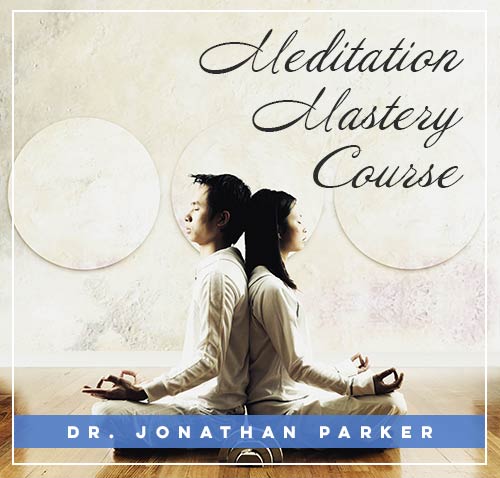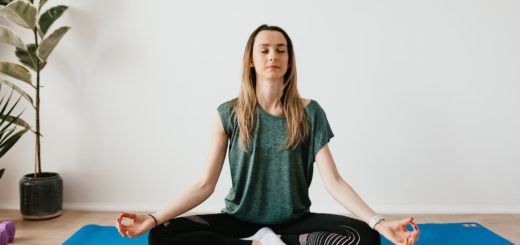Posture Practice: Aligning Body & Mind for Zazen

Before diving in, please note: This post is for informational purposes only. If you’d like to know more about how we approach topics, feel free to check out our friendly Disclaimer Page.
Hey there, amazing readers! 🖐️ Just a quick note: yes, we know there are a lot of ads here. Trust us, we get it—it’s not the prettiest look, but they help us keep this blog alive and kicking. Those pesky little ads cover the costs of all the behind-the-scenes magic, from hosting and tech stuff to creating content we hope you’ll love.
We’re committed to delivering quality posts, and your support (even just sticking around despite the ads) means everything to us. So, bear with us, and thanks for helping us keep the good vibes rolling. Now, on to the fun stuff! 😉
TRANSLATE BUTTON AT THE END OF THE ARTICLE
A Quick Overview
Zazen, a form of seated meditation in Zen Buddhism, emphasizes proper posture as a foundation for mindfulness and concentration.
Aligning the body and mind is crucial in Zazen practice, as it allows practitioners to sit for extended periods with ease and focus.
By understanding the mind-body connection and implementing key elements of Zazen posture, one can experience the full benefits of this ancient meditation technique.
In this article, we will explore the importance of posture practice in Zazen, its benefits, common mistakes to avoid, techniques for improving alignment, and ways to enhance the overall meditation experience.
Introduction to Zazen Posture Practice
Zazen, which means "seated meditation" in Japanese, is a core practice in Zen Buddhism.
The posture adopted during Zazen is crucial, as it helps create a stable foundation for meditation.
The traditional posture involves sitting cross-legged on a cushion with a straight back, relaxed shoulders, and hands forming a mudra (hand gesture).
By aligning the body in a specific way, practitioners can cultivate a sense of stillness, clarity, and presence.
Benefits of Proper Alignment in Zazen
Proper alignment in Zazen posture offers numerous benefits, both physically and mentally.
When the body is aligned correctly, it allows for better circulation, improved breathing, and reduced tension in the muscles.
This, in turn, helps to enhance focus, concentration, and mindfulness during meditation.
Additionally, maintaining proper alignment can prevent strain or discomfort that may arise from sitting for extended periods.
Understanding the Mind-Body Connection
In Zazen practice, the mind-body connection is paramount.
By aligning the body in a balanced and stable position, practitioners can create a sense of grounding and awareness.
The posture acts as a mirror for the mind, reflecting any distractions or imbalances that may arise during meditation.
Through proper alignment, one can cultivate a deeper understanding of their thoughts and emotions, leading to a more profound meditation experience.
Key Elements of Zazen Posture
Several key elements make up proper Zazen posture, including:
1.
Seiza (correct sitting): Sitting cross-legged on a cushion with the knees resting on the floor.
2.
Straight back: Maintaining a straight, upright spine to support proper breathing and alignment.
3.
Relaxed shoulders: Allowing the shoulders to drop down naturally, without tension.
4.
Hand mudra: Forming a hand gesture, such as the cosmic mudra or the diamond mudra, to enhance focus and energy flow.
Importance of Maintaining Alignment
Maintaining alignment in Zazen posture is essential for a successful meditation practice.
Proper alignment helps to create a sense of stability and balance, allowing practitioners to sit comfortably for longer periods.
It also ensures that the body is in a position that promotes relaxation, deep breathing, and mental clarity.
By consistently maintaining proper alignment, one can deepen their meditation practice and experience the full benefits of Zazen.
Common Postural Mistakes to Avoid
There are several common postural mistakes that practitioners should be aware of and avoid during Zazen practice, including:
1.
Slouching: Allowing the spine to curve and the shoulders to round, which can lead to tension and discomfort.
2.
Leaning forward or backward: Disrupting the natural alignment of the spine, which can affect breathing and focus.
3.
Crossing the legs too tightly: Restricting circulation and causing numbness or pain in the legs.
4.
Tensing the jaw or facial muscles: Creating unnecessary tension that can interfere with relaxation and concentration.
Techniques for Improving Posture
To improve posture in Zazen practice, consider incorporating the following techniques:
1.
Body scan: Start by scanning the body from head to toe, checking for areas of tension or misalignment.
2.
Gentle stretching: Perform gentle stretches before sitting to release tension and improve flexibility.
3.
Mindful adjustments: Make small adjustments to your posture throughout the meditation session to maintain alignment.
4.
Use props: Experiment with cushions, benches, or chairs to find the most comfortable sitting position for your body.
Incorporating Mindfulness into Posture Practice
Mindfulness plays a crucial role in posture practice, as it allows practitioners to stay present and attentive to their body’s alignment.
By cultivating awareness of the body and breath during meditation, one can make subtle adjustments to posture and maintain proper alignment throughout the session.
Mindfulness also helps to cultivate a sense of acceptance and non-judgment towards any discomfort or distractions that may arise during Zazen practice.
Building Strength and Flexibility for Zazen
Building strength and flexibility in the body can greatly enhance Zazen practice.
Regular physical exercise, such as yoga or tai chi, can help improve core stability, posture, and overall body awareness.
Strengthening the back, abdomen, and leg muscles can also support proper alignment and reduce fatigue during meditation.
Additionally, incorporating gentle stretching and mobility exercises can help to maintain flexibility and prevent stiffness in the body.
Overcoming Challenges in Posture Practice
Challenges may arise when trying to maintain proper alignment in Zazen posture, such as discomfort, restlessness, or wandering thoughts.
To overcome these challenges, practitioners can try the following:
1.
Focus on the breath: Use the breath as an anchor to stay present and centered during meditation.
2.
Take breaks: If discomfort or pain arises, take a short break to stretch or adjust your posture before resuming meditation.
3.
Practice patience: Understand that maintaining proper alignment takes time and practice, so be patient with yourself as you work towards improvement.
4.
Seek guidance: Consider seeking guidance from a meditation teacher or experienced practitioner to receive feedback and support in your posture practice.
Enhancing Focus and Concentration
Proper alignment in Zazen posture can significantly enhance focus and concentration during meditation.
When the body is aligned correctly, it creates a sense of ease and stability, allowing the mind to settle and become more attentive.
By maintaining a steady and upright posture, practitioners can cultivate a sense of alertness and presence, which can deepen their meditation experience and lead to greater insights and clarity.
Cultivating a Deeper Meditation Experience
By aligning the body and mind in Zazen practice, practitioners can cultivate a deeper meditation experience.
Proper posture creates a foundation for mindfulness, concentration, and inner awareness, allowing for a more profound connection with the present moment.
Through consistent practice and attention to alignment, one can develop a sense of peace, clarity, and insight that transcends the physical body and leads to a deeper understanding of the self and the nature of reality.
Conclusion
In conclusion, posture practice is a fundamental aspect of Zazen meditation, as it helps align the body and mind for a deeper and more focused experience.
By understanding the key elements of Zazen posture, avoiding common mistakes, and incorporating mindfulness and strength-building exercises, practitioners can enhance their meditation practice and cultivate a sense of presence and clarity.
By prioritizing proper alignment and staying mindful of the mind-body connection, one can unlock the full benefits of Zazen meditation and deepen their spiritual journey.

The Enlightenment Journey is a remarkable collection of writings authored by a distinguished group of experts in the fields of spirituality, new age, and esoteric knowledge.
This anthology features a diverse assembly of well-experienced authors who bring their profound insights and credible perspectives to the forefront.
Each contributor possesses a wealth of knowledge and wisdom, making them authorities in their respective domains.
Together, they offer readers a transformative journey into the realms of spiritual growth, self-discovery, and esoteric enlightenment.
The Enlightenment Journey is a testament to the collective expertise of these luminaries, providing readers with a rich tapestry of ideas and information to illuminate their spiritual path.
Our Diverse Expertise 🌟
While our primary focus is on spirituality and esotericism, we are equally passionate about exploring a wide range of other topics and niches 🌍📚. Our experienced team is dedicated to delivering high-quality, informative content across various subjects ✨.
To ensure we provide the most accurate and valuable insights, we collaborate with trusted experts in their respective domains 🧑🏫👩🏫. This allows us to offer well-rounded perspectives and knowledge to our readers.
Our blog originally focused on spirituality and metaphysics, but we’ve since expanded to cover a wide range of niches. Don’t worry—we continue to publish a lot of articles on spirituality! Frequently visit our blog to explore our diverse content and stay tuned for more insightful reads.






